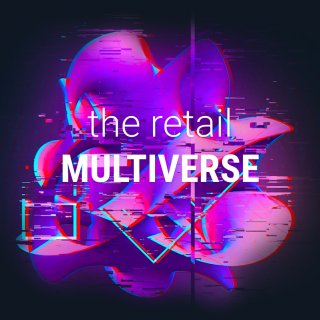
emotions along the customer journey
by daniel buchmann and johannes gebler
Customers are heavily affected by emotions throughout the sales process. That’s nothing new. Just last year, Amazon patented a new feature for their virtual assistant Alexa to capture emotions, analyzing the pitch and volume of the speaker and responding according to how they’re “feeling” by offering the right product. Countless corporate identity teams and agencies load up brands with emotional triggers. But can the same be said for the overall sales process as well? How could one influence and leverage the emotional connection from a more process-driven point of view?
Today's customer expects a personalized customer journey
Emotional connection matters even more if the purchased item is not an everyday consumer product but something that sparks all phases of the AIDA model (attention, interest, decision, action). Just imagine the anticipation one feels when the long-awaited package is waiting at home, the excitement upon seeing or using a product for the first time or the anxiety triggered by an exhausting customer service call. These are all prime examples of emotions within the overall customer experience. In order to influence emotions successfully, a company needs to know who they are dealing with. The question sounds simple enough: Who are the customers and what are their pain points?
know your customers: the power of personas
Personas have been a buzzword for a while now – for a good reason: A detailed persona approach helps to gain perspective and sheds light on the desires, needs and pain points of the respective customer types. In other words, it provides the basis to address customers more directly by knowing the specific journey patterns. Digital affinity, preferred ways of communication, channel switches and churn rates are examples of relevant characteristics. This knowledge of the customer types helps to identify emotions along the customer journey and to prepare the right actions.
issues along the customer journey: pain points
Within the customer journey, there will be moments when things are not running smoothly – the pain points. However, it depends on the point of view: In one of our projects, we had the task to improve and better steer the customer experience of our clients. We first put a major focus on identifying these customer pain points along the journey. How does this work? We conducted a survey among customers as well as experts on the client side and asked where they currently see issues along the customer journey. The result is enlightening: The customers’ and the company’s perception of pain points only overlapped in 55% of all analyzed touchpoints. What does this tell us? Companies need to listen more closely to their customers, integrate their view and analyze the whole journey as well as each individual touchpoint. Only by doing that can we thoroughly identify the range of customer emotions that are experienced along the journey.
what motivates customers?
If we have identified personas as well as their pain points along their journey, we now know where and when customers are feeling unhappy. But why are customer feelings triggered at a touchpoint? Each individual person is motivated by a different set of factors that not only influence why people act in a certain way but also how they feel under a specific circumstance. We call these factors motivators. A customer is unhappy when his or her motivators are not being satisfied completely. We use four different categories to sort these motivators.
four motivators for happiness
1) Function:
On the lower end, we find functional factors where there is very little room for error during the customer interaction. The reliability of an online store will hardly be noticeable to the customer unless it is missing.
2) Benefit:
The connectivity of the store, such as a direct-buy-option within a social media channel, can provide a benefit.
3) Emotion:
If the customer then feels exclusive through special treatment, it might appeal to his or her emotion.
4) Purpose:
The highest level of motivating influence is affected by providing a sense of purpose.
To find out why customers are unhappy and experience pain points, the following two questions need to be raised
Which motivators are currently not being satisfied during the journey?
How do they differ between each persona?
Focus groups with a selection of customers can be a very valuable method of obtaining this kind of information at first hand. The goal is to identify the touchpoints where the dissatisfied motivators of most personas overlap. These are the moments that matter, the key to establishing a sustainable emotional connection.
ready to take action?
The ultimate aim is to align the moments that matter with the right motivators. Therefore, it is time for action:
In the background, a company’s operational setup is a vital foundation and needs a profound target operating model (TOM) to allow a truly customer-centric focus. (For more information, have a look at our whitepaper “Target Operating Model,”authored by Michael Erz and Anja Eimer.) Measures facing the customers directly can be categorized into four fields of action defined by the target operating model.
four fields of actions
People: Direct customer interactions with actual people, be it retail assistants in bricks and mortar or a service hotline, are essential. Our training concepts enable staff members to attend to customers in a more versatile way to recognize basic emotions and react accordingly. Store, dealer or service management can be empowered by a coach to form a high-performance organization focused primarily on the customer.
Technology: New developments in recent years have made it easier to create a connection to customers on a technological level. Virtual and augmented reality are finally becoming a valuable option with the possibility of digital showrooms and configurators creating a “wow” effect with more than just tech-savvy customers. Another example is the use of humanoid robots, such as Pepper, that interact with customers in a charming way while also generating leads and interaction analyses.
Situation: The surrounding plays an important role in triggering emotions. Is the store appealing to the desired emotional motivators? What atmosphere is created? By designing a customer-centric store experience with our CX design colleagues, ultimately the point of sale will become a point of emotion.
Marketing: Targeted individually and with an appeal to the right motivators of the applicable persona, marketing activities can boost the intensity of customer interaction. Platforms for performance marketing such as marketing cloud solutions are implemented with the help of our Retail Intelligence experts, giving companies the opportunity to scale up their reach and nurture their target groups with individualized content.
Nowadays, customers expect a truly personalized customer journey. Therefore, the analysis of the customers’ emotions is the next logical step. Knowing your customers and their motivations is the key to establishing a sustainable emotional connection between them and the company. With our “four fields of action,” a company can leverage the emotional connection for higher customer satisfaction.
This article is based on the already published article „Emotions along the Customer Journey – Why emotionally connected customers are more valuable than just satisfied customers“.
The article is also pulished on LinkedIn.




![190123_Emotionalisierug_Teil2_2[1]](https://www.rpc-partners.com/_Resources/Persistent/6/3/8/0/6380c02407d2e876255cd95607e3a3879928f064/190123_Emotionalisierug_Teil2_2%5B1%5D.png)
![190123_Emotionalisierug_Teil2_1[3]](https://www.rpc-partners.com/_Resources/Persistent/4/1/2/c/412cb90aac7c404eb4b58981777395e7e935b990/190123_Emotionalisierug_Teil2_1%5B3%5D.png)





